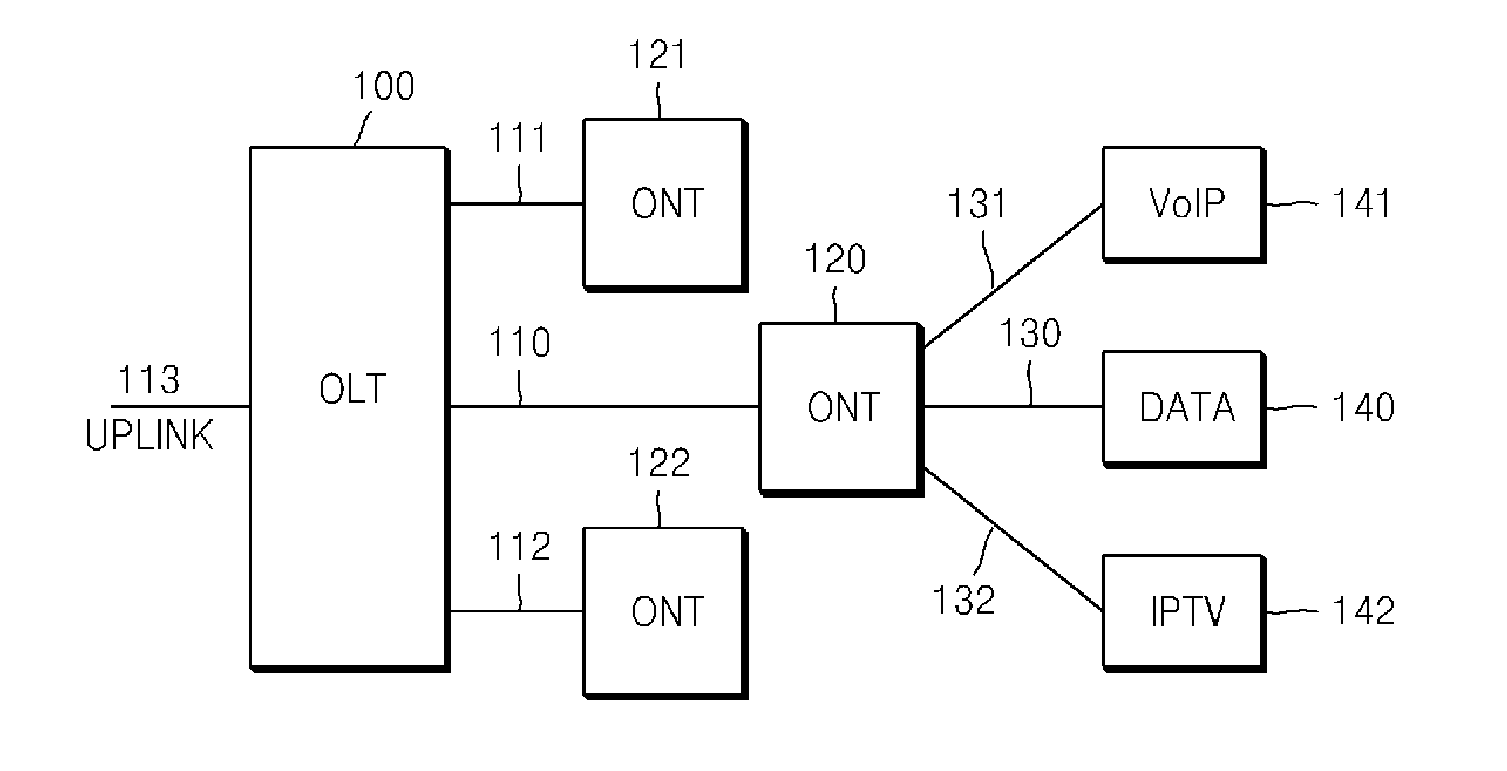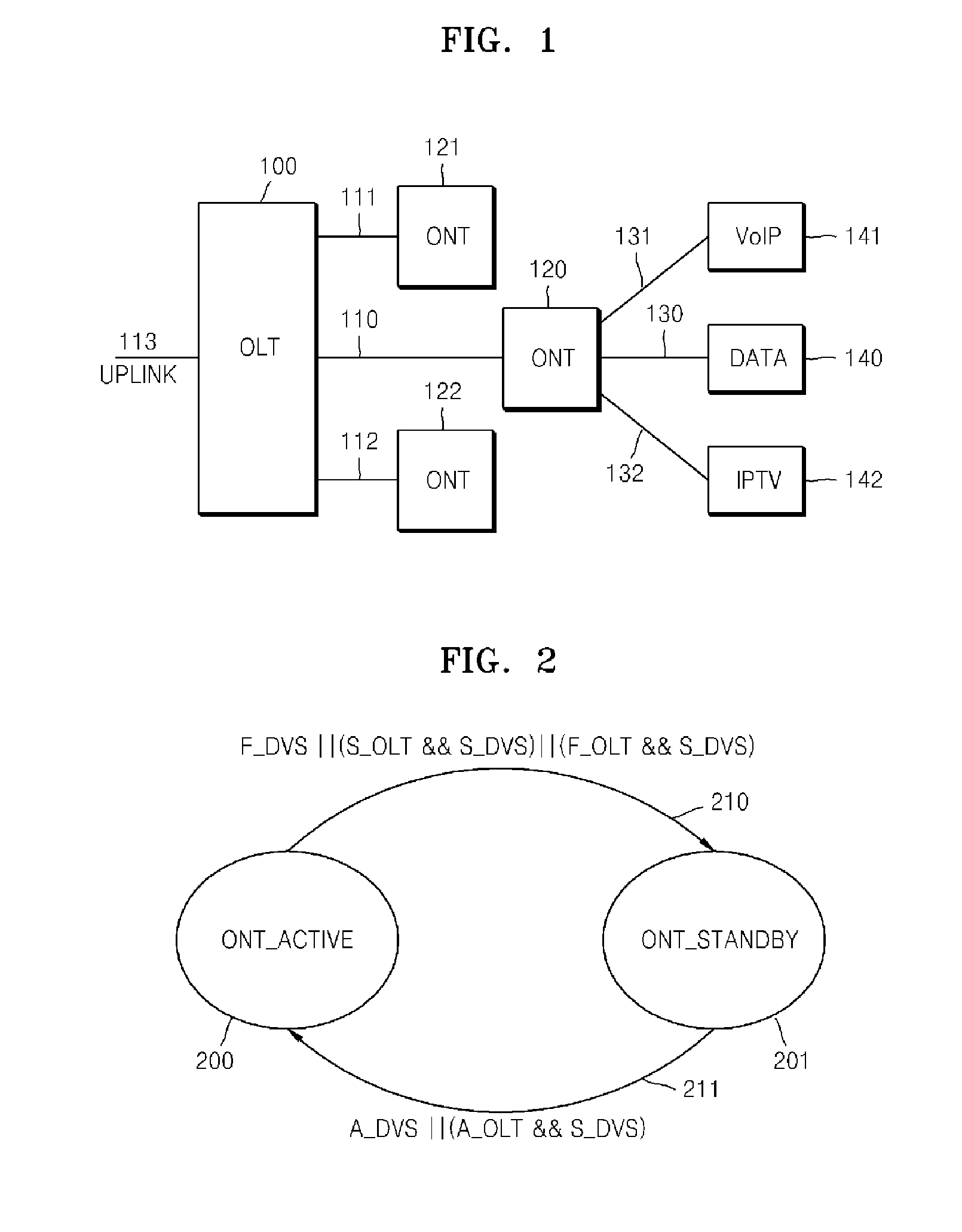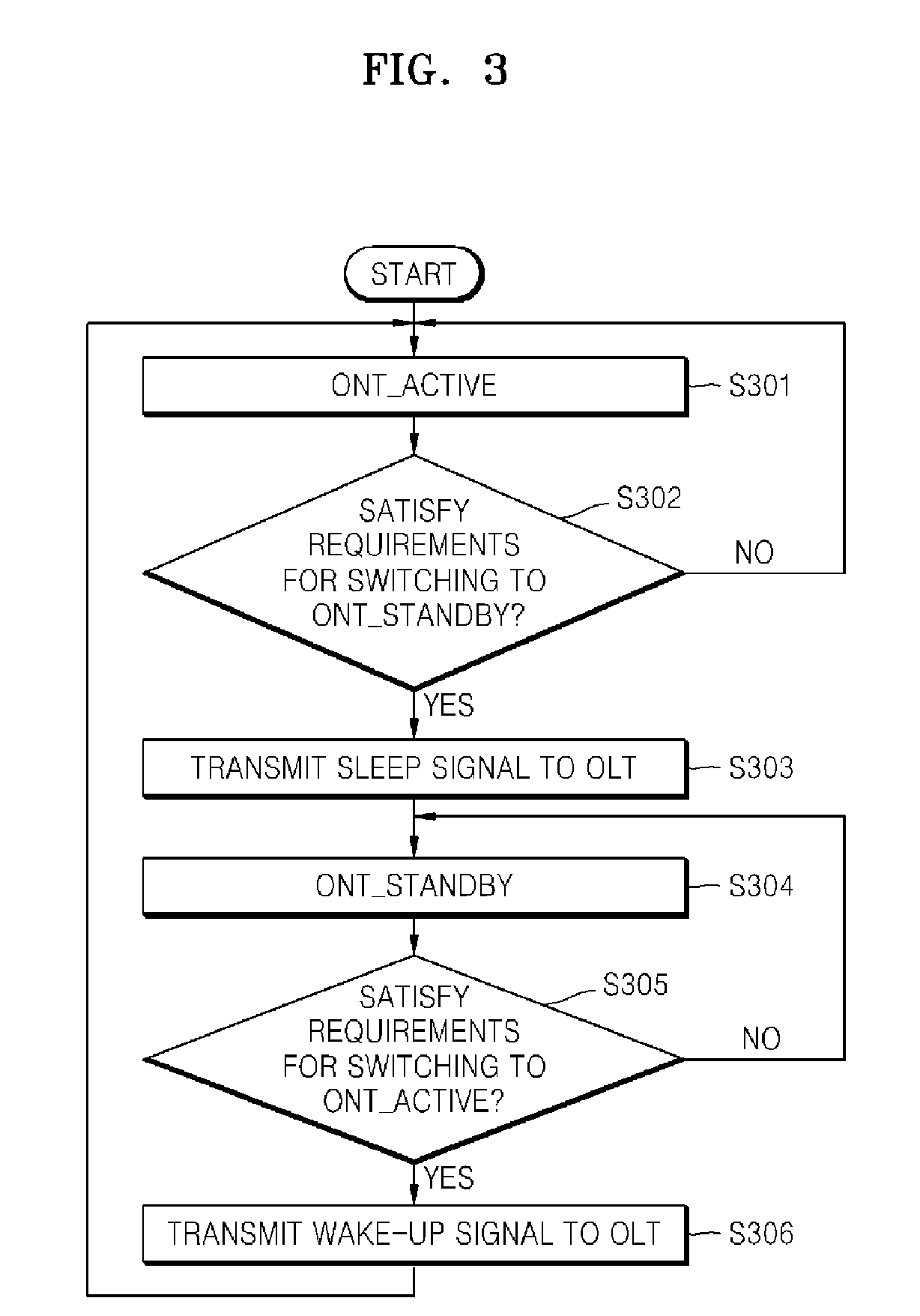Method of saving power in optical access network
- Summary
- Abstract
- Description
- Claims
- Application Information
AI Technical Summary
Benefits of technology
Problems solved by technology
Method used
Image
Examples
Embodiment Construction
[0017]The present invention will now be described more fully with reference to the accompanying drawings, in which exemplary embodiments of the invention are shown. In particular, the present invention proposes a method for reducing power consumption for an optical line terminal (OLT) system, which allows a network service provider possessing a large number of OLT systems to save network operating costs.
[0018]The present invention presents a method of reducing power consumption so as to enable OLT and optical network terminal (ONT) systems to consume a minimum amount of power. In the present invention, an OLT and ONT operate in two modes: activation mode for normal operation and power-saving mode for maximum power-saving operation. According to the method of the present embodiment, the operating mode of an ONT is determined depending on the characteristics of different user terminals connected to the ONT, and the current state of an OLT. It is also assumed that an ONT is connected t...
PUM
 Login to View More
Login to View More Abstract
Description
Claims
Application Information
 Login to View More
Login to View More - R&D
- Intellectual Property
- Life Sciences
- Materials
- Tech Scout
- Unparalleled Data Quality
- Higher Quality Content
- 60% Fewer Hallucinations
Browse by: Latest US Patents, China's latest patents, Technical Efficacy Thesaurus, Application Domain, Technology Topic, Popular Technical Reports.
© 2025 PatSnap. All rights reserved.Legal|Privacy policy|Modern Slavery Act Transparency Statement|Sitemap|About US| Contact US: help@patsnap.com



